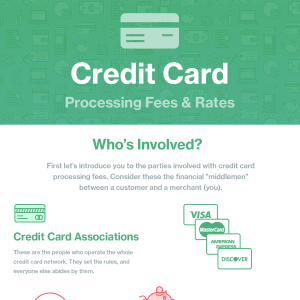For businesses with physical locations (such as retail stores or restaurants), you’re going to need at least one credit card machine per location. These days, you have a choice between a traditional countertop credit card terminal and a POS system.
Countertop terminals can process transactions, but most traditional models offer little or no additional functionality. On the other hand, a POS system can handle inventory management, employee scheduling, and a host of other functions. Naturally, POS systems cost more than most countertop terminals, although tablet-based systems are more affordable (and mobile) than a standalone POS terminal.
All modern processing hardware supports EMV (Europay, Mastercard, and Visa) card payments at a minimum. EMV (or “chip” card) is now the standard method for accepting credit and debit cards in the United States. Since the EMV liability shift back in 2015, you can be held responsible for a fraudulent transaction if you accept an EMV-enabled card using the magstripe instead of the chip. Although the older magstripe technology is slowly being phased out, it’s still handy to have processing hardware that can also process the occasional magstripe-only card.
Most new terminals, card readers, and POS systems also accept NFC-based payment methods. NFC (near-field communications) technology is used by digital wallet payment systems, such as Apple Pay. It’s now built into most modern smartphones, tablets, and even smartwatches. This technology is gaining in use as more people become aware of its availability and convenience.
QR code payments have also become a popular alternative payment method for retail businesses. Interest in QR code payments increased during the COVID-19 pandemic as businesses struggled to implement “contactless” payment methods to protect their customers.












